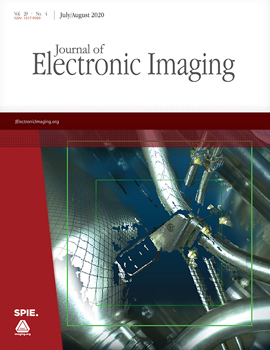Marija Delic
Journal of Electronic Imaging, Vol. 29, Issue 04, 043021, (August 2020) https://doi.org/10.1117/1.JEI.29.4.043021
TOPICS: Binary data, Fuzzy logic, Image classification, Quantization, Computer programming, Principal component analysis, Image quality, Viruses, Feature extraction
Local binary patterns (LBP) are well documented in the literature as descriptors of local image texture, and their histograms have been shown to be well-performing texture features. A method for texture description that is based on the α-cutting approach is presented. The presented approach combines basic definitions from the fuzzy set theory with the main concept of LBP descriptors, which resulted in powerful texture features. The general method is introduced and defined and its binary, ternary, and quinary versions evaluated in tests produced excellent results in texture classification. The performance of our method is presented by an extensive evaluation on four datasets—KTH-TIPS2b, UIUC, Virus, and Brodatz. The introduced descriptors are compared with some of the classical approaches—LBP, improved LBP, local ternary pattern, including one very promising LBP variant—median robust extended LBP (MRELBP), as well as with three non-LBP methods, based on deep convolutional neural networks approaches—ScatNet, FV-AlexNet, and fisher vector based very deep VGG. Our method effectively deals with many classification challenges and exceeds most of the other approaches. It outperforms the classical approaches on all datasets, even in its simplest binary version. It outperforms the MRELBP descriptor on the UIUC, KTH-TIPS2b, and Brodatz datasets and reaches a better classification performance than two out of the three deep learning approaches on the KTH-TIPS2b dataset.



 Receive Email Alerts
Receive Email Alerts